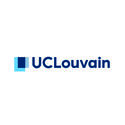In short
Arsenic is a metalloid or semi-metal found in many foods. Not all types of arsenic are toxic. For example, inorganic arsenic (a form that accounts for a significant proportion of the arsenic in rice) is carcinogenic, while the greater amount of arsenobetaine in fish is harmless.
The BIOTRAs project investigated the “arsenic speciation changes” (i.e. the conversion of the initially present arsenic forms into other arsenic forms) and the changes in the concentration of the arsenic forms following preparation, preservation and digestion of food, and measured the bioavailability and toxicity of the different arsenic forms.
Project description
Arsenic (As) is a common contaminant in many foods. Health risks of oral As intake do not so much depend on the total As concentration as on the chemical form (speciation) under which As is/becomes bioavailable in the body. Consequently, there are increasing calls for the development of a speciation-based As standardization. For a clear risk assessment, however, an estimate of the internal As exposure is required, and this can only be determined if it is known what the possible As speciation changes are during food preparation, preservation and digestion. The BIOTRAs project aims to map out these different processes and to arrive at an accurate assessment of internal As exposure through bioavailability and toxicity measurements. Four work packages address these aspects.
Work package 1 focuses on As release from food matrices and As speciation changes during food preparation or food preservation. Work package 2 concentrates on the release of As from the prepared food matrix during digestion. The released fraction is also referred to as the bioaccessible fraction and is an important measure (conservative estimator) for oral bioavailability (internal exposure). Work package 3 focuses on the epithelial transport and toxicity of As species, whether or not in a digested food matrix. The information from these 3 work packages provided the input to work package 4 where the data were integrated into an accurate assessment of internal As exposure.
The methods used within the project are:
- Collecting of samples: white rice, brown rice, carrots, leeks, onions, mushrooms, potatoes, potatoes, alcoholic beverages, cod, trout, scampi, mussels, scallops, nori and hijiki seaweed
- Sample preparation using standard kitchen techniques: boiling, stewing, steaming, preparation in microwave oven, baking
- Total As analysis with ICP-MS
- Speciation analysis of As with HPLC-ICP-MS
- Determination of bioaccessible As fraction via UBM, followed by a static SHIME reactor step
- Cytotoxicity testing of As species via Caco-2 cells
- Intake calculation
- Risk assessment
The results of the project show that the food preparation process allows consumers to reduce the intake of inorganic As. For example, 21% to 48% inorganic arsenic can be removed by using an excess of cooking liquid, which is removed after cooking (e. g. when cooking rice and vegetables). Other methods of preparation in which moisture loss occurs (e.g. steaming, baking) can also cause a decrease in the As concentration. Because of the carcinogenic properties of inorganic arsenic, which is present in rice in rather high concentrations, researchers advice against a long term (ethnic) rice-based diet for people with already a high (lung) cancer risk, such as smokers. Long-term daily consumption of hijiki seaweed is not recommended for everyone because of the very high concentrations of inorganic arsenic. A healthy and varied diet is important to avoid an excessive intake of harmful substances.
Sciensano's project investigator(s):
Service(s) working on this project
Partners





